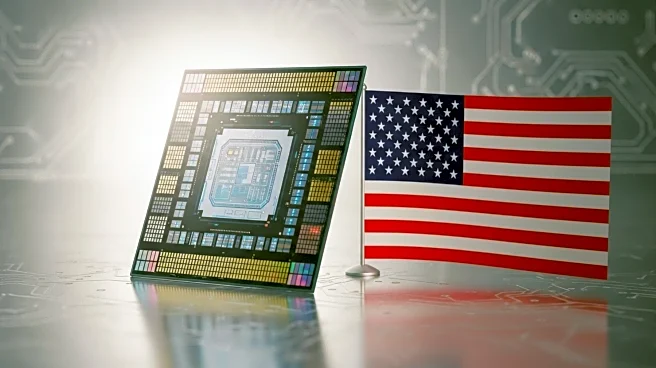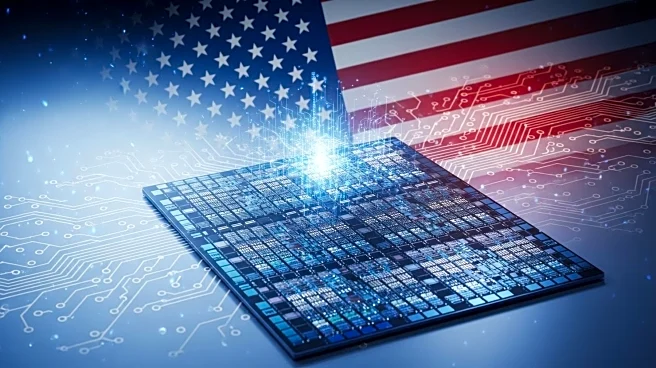What is the story about?
What's Happening?
The Trump administration is facing challenges in its efforts to reduce America's reliance on foreign semiconductor manufacturing. The administration's approach, characterized by threats of tariffs, aims to compel companies to increase domestic chip production. Recently, the U.S. government acquired a 10% stake in Intel, using funds from the CHIPS Act and the Secure Enclave program. This move is part of a broader strategy to bolster U.S. chip manufacturing capabilities. The administration has also threatened to impose tariffs of up to 100% on imported chips unless U.S. tech companies produce one chip domestically for every chip imported. This policy is intended to enhance economic security by reducing dependence on Taiwan Semiconductor Manufacturing Co. (TSMC), which currently produces a significant portion of the world's advanced silicon.
Why It's Important?
The administration's strategy could have significant implications for the U.S. semiconductor industry and the broader economy. By pushing for increased domestic production, the administration aims to secure the supply chain and reduce vulnerabilities associated with geopolitical tensions, particularly with China. However, the feasibility of achieving a 1:1 production-to-import ratio is questionable, given the time and investment required to build new fabs. Companies like Intel may benefit from increased domestic production, but others could face higher costs if tariffs are imposed. The policy could also impact global supply chains and international trade relations, as companies may need to adjust their manufacturing strategies to comply with new regulations.
What's Next?
The Commerce Department is reportedly considering the implementation of the proposed tariffs, which could lead to significant changes in the semiconductor industry. Companies may need to accelerate their plans for domestic production or face increased costs. The administration's approach may also prompt reactions from international partners and competitors, potentially leading to shifts in global trade dynamics. As the situation develops, stakeholders will be closely monitoring the administration's next moves and their potential impact on the industry.
Beyond the Headlines
The administration's strategy raises questions about the long-term sustainability of using tariffs as a tool for economic policy. While the approach may yield short-term gains in domestic production, it could also lead to increased costs for consumers and businesses. Additionally, the focus on domestic production may overlook the benefits of global collaboration and innovation in the semiconductor industry. The policy's success will depend on the ability of U.S. companies to scale up production efficiently and the administration's willingness to adapt its strategy in response to industry feedback.
AI Generated Content
Do you find this article useful?














